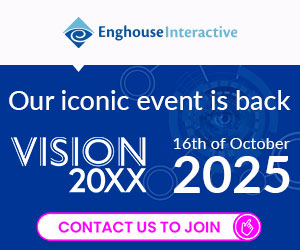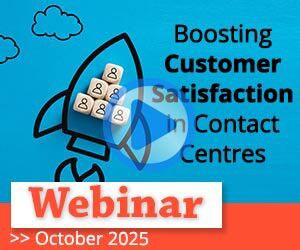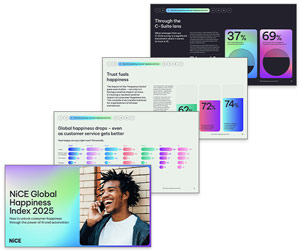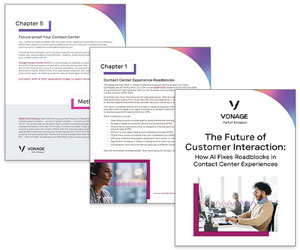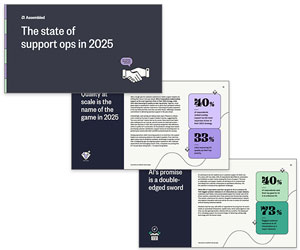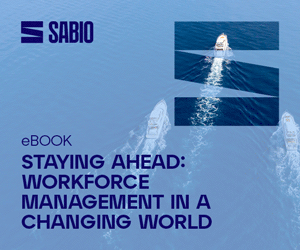Cristian Rennella looks at why you need to put customer service at the heart of your business strategy to drive overall success.
Way back in 2008, we began working on a new project, and just like all entrepreneurs venturing out exclusively with their own capital (better known as “bootstrapping”), with no external investments, we had no other option than to carry out ourselves (the founders) all the work relating to customer service from day one (and it was definitely the best thing that could have happened to us!).
Seven years have passed and we still do not have a specific area dedicated to customer service.
With 34 people forming our work team, we have decided to set an internal policy where each one of us (from the newest, such as a junior programmer, to the oldest, the CEO) is to work on customer service tasks for one day in every ten work days.
But why did we make this decision and why are we confident that other entrepreneurs should also adopt it as a strategy for growth?
Here is everything we have learned over the past years:
1. As a first priority, we make decisions based on customer service
This excellent habit of having everyone perform customer service tasks allows us to have direct contact (with no intermediary) with the end users.
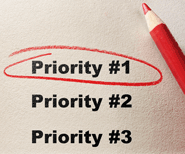
In consequence, this allows us, at the moment of defining strategically how our product will evolve over the short, mid, and long term, always to have a different perspective: that of the client.
Basically, it is as if all of us were the client and we represent them during the company’s internal planning meetings (with their corresponding complaints, suggestions, etc.).
A concrete example of this happened in our own business venture in 2010 when on a strategic level we were considering changing our servers to Amazon Web Services (AWS). It was an important decision as it would affect cost and efficiency. However, based on what we heard over and over again when we worked in customer service, we decided to delay this technical implementation for 2 years and we gave priority to the development of a whole new design focused on mobile devices.
This is definitely what had the most favourable impact on our users. The decision based on direct contact with the clients was the correct decision at that time, and even today it still generates positive results and separates us from the competition. The focus on customer service is what guides the future development of our product.
2. Criticism is the best motivation
After years of working with this philosophy, us being engineers, programmers, and designers, we realised that no matter how hard we try, we unfortunately live deeply immersed in our own world.
For example, we can tell you the exact reasons why we put a button in one specific place on the screen or why a field to be completed has a certain format or even how a new function that we created “should” work within an application.
However, when we go to the phones or email to answer the questions, or better stated “critiques”, from our users, we realise that in spite of our logic and justification of the “why” and “how” we did something, it does the user no good if they are not able to use it (not understanding) or if it is of no use.
This is why it is so important that all of us do the complete cycle, which means not just doing our daily job, but also spending time in customer service. In this way we are able to bring our feet back to earth and see the main reason for our job: “solve a concrete problem for the user who pays our salary.”
This criticism of our work does not need to discourage us. Just the opposite, it should create a sense of belonging and obligation so that we take the responsibility for what we implement in order to maximize our work and impact in the future.

An example of this is what Paul English, founder of Kayak, does. In the technology department there is a red phone for customer service. Each time it rings a programmer must answer. When Paul is asked why a person earning around USD $150,000 (£95,000) per year should do this when people are available in a call centre who can do it for a fifth of this amount, he responds: “the second or third time that they must interrupt what they are doing, get up and answer the phone, without a doubt, the first thing they are going to do is solve the problem immediately.”
3. There isn’t a better place to learn!
Another aspect that for us proved to be surprising and provided huge benefits is in understanding that there is no other area in the company where a new employee can learn quicker about the “what” we do and “how” we work than in customer service.
This is why, in the process of trial and insertion of a new team member, they must complete one continuous month in customer service.
This allows us to analyse various aspects that from our point of view are essential:
- their ability to communicate verbally or in writing during critical moments
- their skill in solving new unexpected problems (that do not have a predetermined solution and are not known beforehand)
- their adaptation in order to get to know the rest of the employees from different sectors with whom they need to interact in order to finally give a correct response to the end user.
As a point of reference, for example, the company FreshBooks requests, as a minimum, that each new prospective employee spend a period of 2 months in customer service as part of the requirements for being hired.
4. Bet on a long-term relationship
The goal in working in this new way is to build a long-term relationship with the user, where this person receives a direct response from those who really created the product, from those who know it inside and out and can help them with their problem in order to successfully move forward.
What company today will give us a direct response from the CEO? Or a programmer? Or a designer? If we are lucky someone will respond and be able to guide us. If we can separate ourselves from the competition through these small but important aspects, we will create relationships with our clients that will last for years!
Additionally, and even more importantly, we will rightly influence our programmers and designers so that they think and develop considering the user’s perspective, that they share and feel the pain that ended in the user having to call customer service.

Cristian Rennella
All of this will generate through time, work and dedication, a better product for those that keep the lights on for our start-up: the clients.
With thanks to Cristian Rennella, CTO of MejorCrédito in Colombia. .NET programmer and investment angel in the Latin American region
Author: Megan Jones
Published On: 14th Oct 2015 - Last modified: 15th Aug 2025
Read more about - Customer Service Strategy, Customer Satisfaction (CSAT), Customer Service, Service Strategy




